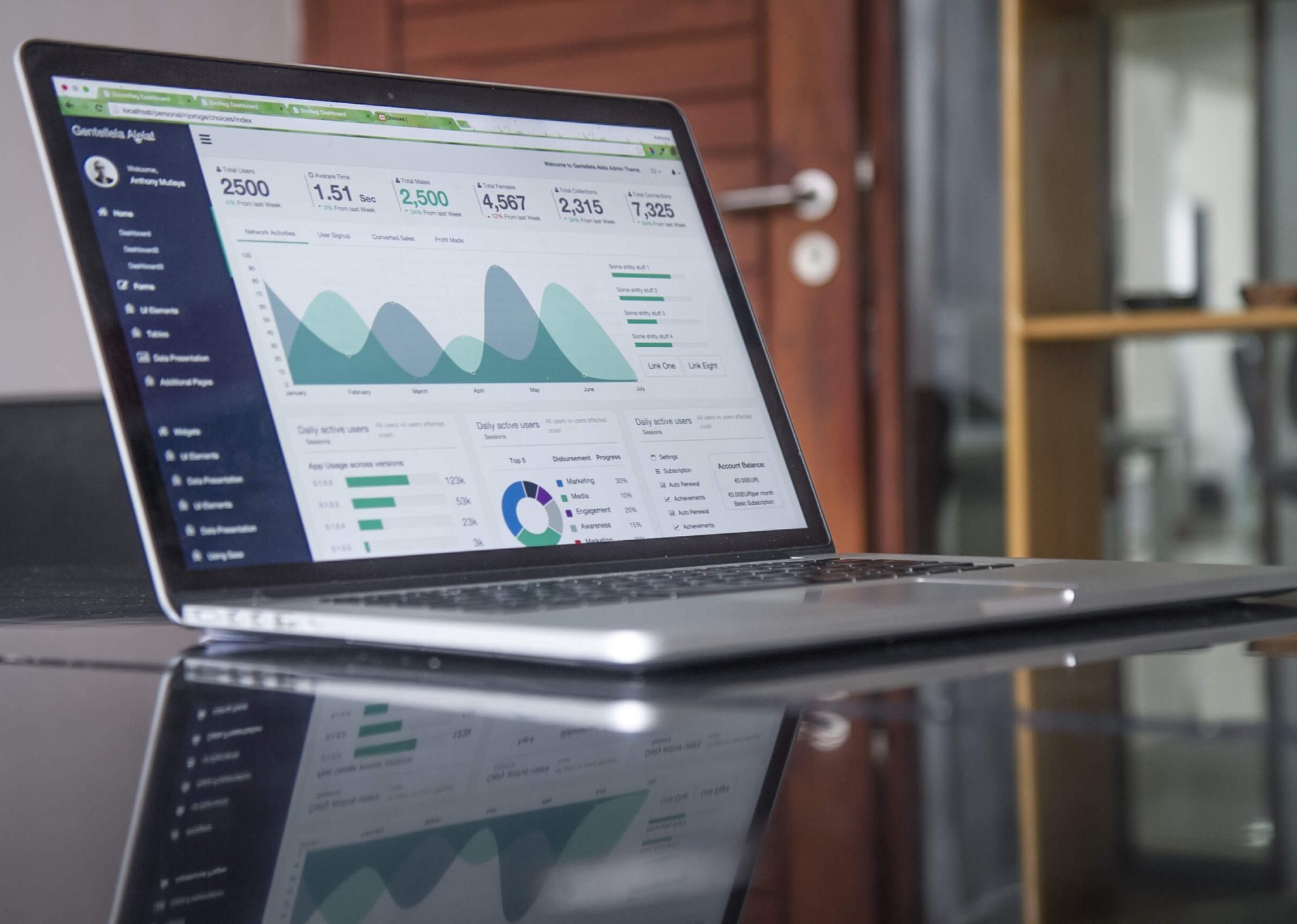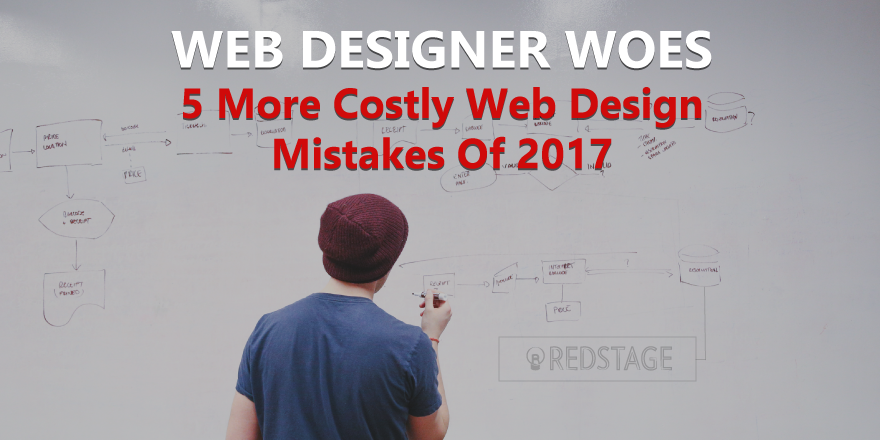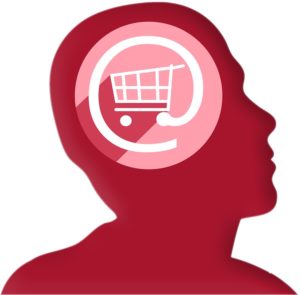
by Don Pingaro | Nov 16, 2017 | Commerce Strategy, UX/UI Design

As marketers, constantly sending emails is critical to mission success. However… There’s a big difference between simply “sending an email” and delivering targeted reminders at critical touch-points along the customer journey. Reminders, offers and insights, mind you, that influence higher conversions, win-back customers, and maximize your customer lifetime value. Here’s a quick breakdown from Rejoiner’s massive report on the subject: “Email Marketing for eCommerce: The 8 Campaigns That Have Generated over $140M”. So again, here’s 3 major issues with your email campaigns. If you’re not doing these things right, why bother?
1. You’re Doing Newsletters Wrong. Stop That.
Blanket email marketing works less and less each year, AKA: It doesn’t work anymore. According to Rejoiner and the DMA’s 2015 national client email report, “86% of email revenue is coming from email campaigns that use advanced tactics.” So it’s time to switch it up. Rather than sending a promotional email to your entire subscriber list, get targeted. Segment your lists by shopping category and morph one 10% off coupon into 10 different coupons like the hydra from Homer’s Odyssey. Your dress crowd should get a deal on dresses with a distinct description. It’s simple divide and conquer. Your tie-guys should get a deal on ties. Swimwear, slacks, unmentionables… Segment them all and surround the enemy. Er, your customers.
2. You’re Using “Triggers” Right? …Riiiiight???

Rejoiner outlines the following critical touch-points as send-signals for what we in the industry call “targeted emails.” Set up an automation that sends emails when your customers fit any of these criteria:
1. Browser Abandoner (they looked at that hat 3 times… make it 4)
2. New Subscriber (hasn’t made a purchase)
3. New Customer (after first purchase)
4. Cart Abandoner (you know this one)
5. Primed for Cross Sell (compliment their recent purchase)
6. VIP (The ones who spend the most are worth the most)
7. Replenisher (are they really going to keep that lipstick forever?)
8. Defector (re-engage before you lose them to the dark side)
Rejoiner.com
Learn them. Live them. Love them. Tell your friends.
3. Your Win-Back Emails Are WEAK

Your cart abandonment emails are lame and uninspired. You also don’t use enough of them. Here’s Rejoiner’s short list of pro-tips that can be used for lonely carts and customers who’ve disappeared into the abyss elsewhere:
- Plan your cart abandonment emails under the pretense of customer service.
- Know and accept that customers will open win-back emails from their mobile. Anticipate this.
- Remember segmenting? Remember categories? Have you remembered anything I’ve said? Your abandoned carts are potential customers. Treat them like the real thing and remember: filter, divide, target, attack.
- You should know who’s on your site. Guest, registered, subscriber, Bill from accounting. Be the all-knowing Yoda of site traffic.
- Oh a cart was abandoned. Better do nothing about it. Just kidding, send them an email within 30 minutes to ask why. Let them know you mean business, and you’re here to help.
- While your win-back email should have a customer service focus, you’d do well to include a visual reminder of the last thing they looked at before they dropped-off.
- It’s now or never. Don’t lose them forever. Send a follow-up or two to make sure they come back.
- When it comes to discounts, use your brain. It’s 2017 and customers have gotten wise. Many know you’ll send a discount if they leave, so make sure you’re not throwing away money. You can achieve this through what Rejoiner calls “frequency capping.” Don’t be the parent who gives their kid candy every time they scream for it. It won’t do either of you any favors.
Sorry for the tough love, but you’ll thank me one day.
You can read and download the full report here at Rejoiner.com.
Find more email marketing best practices for retailers here.
Keep an eye out for our Emergency eCommerce Checklist: A Tactical Guide to Surviving The Holiday Rush (Bookmark this page, link coming soon!).

by Zee Aganovic | Nov 13, 2017 | Commerce Strategy, System Integrations, Web Development

AI in eCommerce: Hype or Reality?
The whole business universe, eCommerce included, is buzzing about artificial intelligence, the capability of a machine to imitate intelligent human behavior.
Unfortunately there is no exact classification of what makes a solution an artificial intelligence solution. Any computer based system that is using data to make some decisions can be labeled as an artificial intelligence solution. Artificial intelligence means many different things for many different people.
This gives almost every software vendor a license to add an artificial intelligence ‘spin’ to the description of their product. This is counterproductive. Instead of attracting new buyers this just confuses the marketplace.
So, let us help you develop a pragmatic framework for understanding and use of AI in your eCommerce strategy.
Why AI in eCommerce?
Manufacturing, information systems and services are rapidly commoditized. The next industrial revolution is fueled by a need to deliver memorable customer experiences. It’s called the experience economy.
Remember Steve Jobs and his decision to recruit John Sculley as Apple’s CEO. People were confused about the logic of hiring Pepsi-Cola’s president who has nothing to do with technology to run the pioneering computer company. At the time only Steve had the vision and understanding that it is not about computers or cola but about the experience that customers have while using the computer or while drinking cola. That passion for memorable customer experiences is what eventually made Apple into one of the most successful companies in the history of mankind.
Delivering memorable customer experiences is a business of treating the right audiences with the right experiences at the right time.
Technically speaking this is a problem with many moving parts and infinite number of permutations. Each visitor to your site can be classified through use of hundreds of attributes. Buying journeys and consideration paths are different for different audiences. And, finally the business owners can act and treat visitors with a myriad of promotions, product recommendations, messages, content or layout changes.
To illustrate the size of the customer experience problem let’s compare it with a simple chess board.
Here is how. Let’s imagine that our problem is only to create the best customer experience on eight pages of your site. Let’s further assume that each page has only 8 elements, and that we have only one variation for each element. Visually this problem can be represented as 8×8 chess board where each column is a web apge with 8 elements and where each field can only have a black or white color (white is for old and black is for a new version of an element).

The total number of permutations of how the experience chess board can look like is equal to 264.
To help you visualize the size of this number let’s assume that each number is a kernel of wheat.

This number represents a huge pile of wheat. As a matter of fact this number is so big that it represents more grains of wheat than was ever farmed on our planet since the beginning of time.
This is precisely why we should use AI in eCommerce.
A problem of this magnitued can’t be solved through brute force. Conventional A/B split testing or if-this-do-that visitor personalization may sound nice but they are grossly inadequate solutions. To remain competitive you must arm yourself with much more powerful tools that are built on the foundation of big data analytics and machine learning algorithms.
Trust, but Verify

Product recommendation solution providers have done the most to apply advanced machine learning techniques and to deliver consistent results. But not all product recommendations are equal.
If you speak to the best of breed solution providers who invested tens of millions of dollars into research and development you will hear loud complaints about newcommers who are using open source packages to mimic their solutions. Unfortunately, many eCommerce brands are choosing a vendor on the basis of feature completeness of its offering rather than on the basis of the quality of the individual solution components.
If you listen to a vendor talk you will logically think that irrespective of the type of product recommendation solution you will get good value. The only difference between two products is how much revenue lift you will materialize. When a vendor tells you that ‘visitors who engage with recommended products are 10%-15% more likely to buy’ you are inclined to believe such a statement.
There is a small problem. The statement above could be true but at the same time you might be losing money with your product recommendation solution.
Here’s how. If you read the statement above more carefully you will realize that it does not compare results of those visitors who have seen product recommendations against those who were not presented with product recommendations. This would be the most accurate measurement. Instead, each visitor is presented with product recommendations which prevents you from knowing if the same visitors who enaged with recommended products would buy if there were no product recommendations at all.
That’s why we recommend you always test and verify the impact of each of the add-on solutions to your eCommerce site.
Start Small

In developing your business strategy do not view AI as a ‘silver bullet’ that will magically make your eCommerce business better. Instead, think of it as a new set of technologies that are dramatically changing the competitive landscape.
Over years the ability of your company to adapt and effectively use AI solutions will correlate with your ability to effectively compete and win in the marketplace.
The logical question is where to start and how to build a long term strategy.
We always like to be practical and recommend actions that are satisfying 20/80 rule: 20% of effort (cost) that provides 80% of benefit.
The list of such ideas includes:
- Customer experience assessment: in addition to a quite common UX audit we also recommend use of visitor data to perform an experience health check (FYI: if you do not have resources or do not know how to do it we offer a free health check service)
- Validate ROI of add-on applications: we see on a daily basis how brands are spending a lot of money on expasive user generated content applications, reviews, product recommendations – validate and make sure you are getting ROI from each one of them (FYI: we have advanced testing capabilites and we can assist you with this task).
- Uncover persuadable audiences – a fatal flaw of conventional personalziation solutions is targeting of potential customers vs. persuadable audiences, those who will become a customer only if you do something for them.
As a final note…
Consider this perspective from innovator Adam Morris, CEO of Redstage Worldwide:
“For better or worse, humanity is witnessing ever-increasing evidence that AI provides profoundly better solutions to problems we as humans lack the cognitive processes to conceive. Over the past decade, what we consider ‘modern’ or ‘state-of-the-art’ UX for online shopping hasn’t changed all too drastically. Of course, we’ve experienced improvements in search, filtering, and personalization, but an eCommerce sitemap still looks remarkably similar to the sites of old. Since AIs lack any preconceptions regarding how things ‘should’ be done, I believe AI will work to our advantage, ushering in a fresh age of progress that we ourselves could not possibly create alone in the same scope of time.”

by Don Pingaro | Nov 7, 2017 | UX/UI Design

The cornerstone of good UX is simplicity. As Redstage’s Creative Director Adam Piken says, “Don’t assume all your customers understand what a ‘Continue’ button does or what a ‘hamburger’ icon means… especially for eCommerce. Use well-known web design standards and simple, direct language.” If there’s one thing the web designers and developers at Redstage know, it’s that “no-brainers” aren’t always obvious in eCommerce. More often than not, it takes an expert with a critical eye to catch what others cannot (and we’ve got your back!). With this in mind, here’s 5 more costly web design mistakes of 2017:

5. Keep Your Fonts Consistent
It’s one of the most basic elements of good web design. Every site should have 1-2 fonts. One primary or master font for the entire site and a secondary font for links, CTAs, buttons, quotes, banners, and the special stuff. Often, the best solution is to simply find one font that looks good in any size, and use italics or different font weights to make special offers stand out. Keep it simple, or your site’s text will compete for attention and confuse or annoy the customer. Keep it simple. Keep it safe.

4. Click To Enlarge
All too often sites stray from the typical norm of “click to enlarge” and opt for a “zoom” image option that’s tricky, fuzzy, and confusing for users. Stick with the “click” option and make sure the product not only appears in high-definition once enlarged, but that customers can easily exit the enlarged photo intuitively (like with a big “X” or “close” button in the top right corner). Any time someone has trouble exiting the zoom function on your site, you’re creating a barrier between the customer and the checkout. Make this process as easy as possible. It’s UX 101, right?

3. View Our Reviews
Consider using a service like our partners at Yotpo to import your reviews directly from Yelp! This quick feature is easy to use and adds credibility as well as buyer certainty for customers. For your first-time customers, reviews could mean everything. If you’re considering adding reviews, make sure to put them somewhere they’re easily accessible (and make sure they’re good before you go live!). You’d also do well to add a script that hides those zero-star reviews on products that haven’t been reviewed yet. In our experience, it’s always better to have no review than a zero rating, which is a big “Don’t buy this” trigger.

2. Choose A Payment Method
Your items are in their cart… They’re on their way to the checkout… Make it as easy as possible for them to do so. You have all the major credit cards, but do you offer PayPal? What about Amazon Pay, Android Pay, or Apple Pay for those mobile users? Samsung Pay? Money order? Price-plans? Lay-away? Bitcoin? Sorry, but you see my point. Offering a variety of payment methods, online or off, means a better, faster checkout experience for customers, so make sure you optimize for breadth.

1. Would You Like To Checkout As A Guest?
In our last Web Designer Woes article, we mentioned the importance of featuring trustmarks and shipping info at the checkout. This time, we’re diving into something equally if not more important: Guest Checkout. Sites that don’t have guest checkouts are losing customers. If they have to think, or worse, feel like they’re being taken advantage of, they have one foot out the door. It’s that simple. When someone goes to buy something, give them the guest option. You’ll still collect plenty of data on them, but they’ll feel like they’re not being taken advantage of and won’t expect endless forms. This expedited checkout method prevents cart abandonment, and more importantly, speeds up the checkout experience — something that can be a game-changer for the holiday season ahead.
For More Tips, check out the previous post in this series:
Web Designer Woes: 5 Costly Web Design Mistakes of 2017
If you have any questions or tips that aren’t on this list, feel free to mention them in the comments below!

by Don Pingaro | Nov 7, 2017 | UX/UI Design

The cornerstone of good UX is simplicity. As Redstage’s Creative Director Adam Piken says, “Don’t assume all your customers understand what a ‘Continue’ button does or what a ‘hamburger’ icon means… especially for eCommerce. Use well-known web design standards and simple, direct language.” If there’s one thing every web designer and developer at Redstage knows, it’s that “no-brainers” aren’t always obvious in eCommerce. More often than not, it takes an expert with a critical eye to catch what others cannot (and we’ve got your back!). With this in mind, here’s 5 more costly web design mistakes of 2017:

5. Keep Your Fonts Consistent
It’s one of the most basic elements of good web design. Every site should have 1-2 fonts. One primary or master font for the entire site and a secondary font for links, CTAs, buttons, quotes, banners, and the special stuff. Often, the best solution is to simply find one font that looks good in any size, and use italics or different font weights to make special offers stand out. Keep it simple, or your site’s text will compete for attention and confuse or annoy the customer. Keep it simple. Keep it safe.

4. Click To Enlarge
All too often sites stray from the typical norm of “click to enlarge” and opt for a “zoom” image option that’s tricky, fuzzy, and confusing for users. Stick with the “click” option and make sure the product not only appears in high-definition once enlarged, but that customers can easily exit the enlarged photo intuitively (like with a big “X” or “close” button in the top right corner). Any time someone has trouble exiting the zoom function on your site, you’re creating a barrier between the customer and the checkout. Make this process as easy as possible. It’s UX 101, right?

3. View Our Reviews
Consider using a service like our partners at Yotpo to import your reviews directly from Yelp! This quick feature is easy to use and adds credibility as well as buyer certainty for customers. For your first-time customers, reviews could mean everything. If you’re considering adding reviews, make sure to put them somewhere they’re easily accessible (and make sure they’re good before you go live!). You’d also do well to add a script that hides those zero-star reviews on products that haven’t been reviewed yet. In our experience, it’s always better to have no review than a zero rating, which is a big “Don’t buy this” trigger.

2. Choose A Payment Method
Your items are in their cart… They’re on their way to the checkout… Make it as easy as possible for them to do so. You have all the major credit cards, but do you offer PayPal? What about Amazon Pay, Android Pay, or Apple Pay for those mobile users? Samsung Pay? Money order? Price-plans? Lay-away? Bitcoin? Sorry, but you see my point. Offering a variety of payment methods, online or off, means a better, faster checkout experience for customers, so make sure you optimize for breadth.

1. Would You Like To Checkout As A Guest?
In our last Web Designer Woes article, we mentioned the importance of featuring trustmarks and shipping info at the checkout. This time, we’re diving into something equally if not more important: Guest Checkout. Sites that don’t have guest checkouts are losing customers. If they have to think, or worse, feel like they’re being taken advantage of, they have one foot out the door. It’s that simple. When someone goes to buy something, give them the guest option. You’ll still collect plenty of data on them, but they’ll feel like they’re not being taken advantage of and won’t expect endless forms. This expedited checkout method prevents cart abandonment, and more importantly, speeds up the checkout experience — something that can be a game-changer for the holiday season ahead.
For More Tips, check out the previous post in this series:
Web Designer Woes: 5 Costly Web Design Mistakes of 2017
If you have any questions or tips that aren’t on this list, feel free to mention them in the comments below!

by Don Pingaro | Nov 3, 2017 | Commerce Strategy
At Redstage, we try to keep our content fresh, informative, and interesting for our readers. Whether it’s marketing psychology or the latest eCommerce growth hacks, our aim is to supply you with a constant stream of useful, actionable, and entertaining material. Thanks for tuning in! We hope we’ve helped you on your own quests in the industry. Here are the top 5 most read eCommerce articles from Redstage Worldwide:
#1. Online Buying Behavior: The Difference Between Men & Women

Are Men and Women equals when it comes to shopping? The answer, unsurprisingly, is – definitely not. While much has changed in recent years, there are still some behavioral aspects that set these two genders apart. What this article is primarily tackles though is the difference between online buying behavior between men and women. (read more)
#2. Selling & Upselling with Psychology & Human Behavior

This article was written by Anthony Latona, Redstage Worldwide’s Chief Marketing Officer & Controller. He writes, “Ted.com is one of my favorite websites ever. The entire site is filled with some of the most interesting, captivating, thought provoking and mind blowing presentations from the world’s top geniuses and experts. I highly recommend clicking around Ted.com and learning something… I recently watched this particular video called, “Are we in control of our own Decisions?” by Dan Ariely. Dan Ariely is a behavioral economist and wrote the book “Predictably Irrational” (Official Site). His TED Talk is brilliant and has a few ideas that we can use in our online marketing and on our eCommerce websites… Here’s what I found out…” (read more)
#3. How All B2C Companies Should Be Marketing By 2020

According to Adam Morris, CEO of Redstage, “The most profitable companies in 2020 will be those which seamlessly integrate content, product development and lifestyle marketing into the customer journey — and benefit from the data.” As an IoT enthusiast (already automating his household with Google Home), Morris believes “top brands will meet customer needs almost instantly, anywhere, and make customers view brand interactions as a constant benefit to their lifestyle.” In this world… (read more)
#4. The Incredible benefits of Magento 2

Magento just took everything to a whole new level with Magento 2.0. Magento 2 offers a superior feature set compared to nearly any other eCommerce platforms but you may ask yourself… What are the real benefits of Magento 2? Originally, we thought that Magento 2 would simply be a major upgrade from Magento 1, but it’s actually much, much more than that… (read more)
#5. Top 5 eCommerce Challenges Stores Will Face This Holiday Season & How To Address Them

With the holiday season underway, it’s no wonder this one made the list. From stock control to shipping to shopping experiences, here are the top 5 pain-points stores will face this holiday, and our guide to managing these risks. (read more)





















Recent Comments